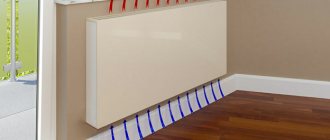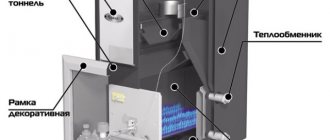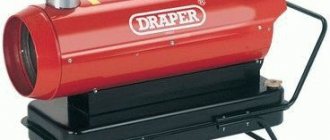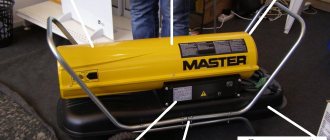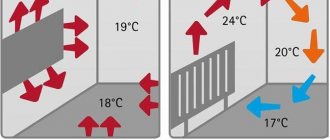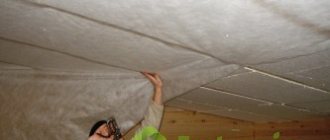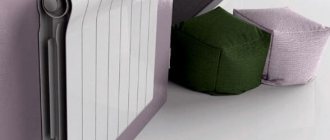In the off-season and when heating is insufficient, apartment owners are faced with the question of choosing a heater.
A heater can also be the simplest way to heat a country house, garage or utility room.
There are many types and options of heaters. Let's consider one of the most popular - convector heaters. Pros and cons, how it works and what customers say.
Principle of operation
How does a convection heater work? The body of the convector heater has holes: at the bottom and at the top. Cold air (without the help of a fan, of course) enters the heater through the bottom. The heating element heats the air, it becomes lighter, rises up and enters the room through the upper grille.

Operating principle of an electric convector
Modern models are equipped with thermostats that allow them to maintain the temperature that suits the user.
The most effective placement of the convector is under the windows. In this case, they create a thermal curtain against drafts. It is better to buy two low-power convectors for each window than one powerful one for only one window!
How to control a convector from a smartphone
This is one of the advantages of modern heating devices. If you connect a removable SMART WI-FI module to the Transformer digital INVERTER control unit, you can control the convector through the proprietary BALLU HOME mobile application from anywhere in the world. Moreover, you can combine several home appliances into a single intelligent climate system, group devices into zones and control the operation of each convector separately. If you wanted, you could warm up the house to the desired temperature while you were returning from work.
Ballu mobile application
There is remote control of any number of electric convectors without restrictions, combination of devices by zones/rooms and programming of operating modes 24/7.
Device power
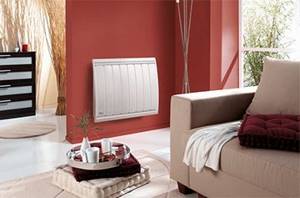
Before buying a heater, you need to determine how powerful it should be.
The simplest principle of calculation for a well-insulated room is this: for 10 m2 of space you need 1 kW of device power (the ceilings should be 2.7 - 3 m high).
If the walls are higher or lower, then for every 10 cm 10% is added or decreased.
You also need to add about 10-20% power if:
- corner room;
- first/last floor and you can feel it;
- There is a large glazed loggia.
We have an office space on the ground floor above a cold basement. Room area – 25 m2. Two windows, ceilings 2.7 m. The basic power indicator for 25 m2 is 2.5 kW. On a cold floor we add 20% = 3 kW. In order to block the access of cold from two windows, you can install 2 heaters of 1.5 kW each.
Tips for selection and installation
To be satisfied with the device for as long as possible, you should adhere to several basic rules:
- Do not place any objects closer than 40 cm to the switched on device;
- It is not recommended to leave the unit turned on overnight;
- Do not allow water to enter or wet clothing to remain on the device;
- do not place equipment close to the window;
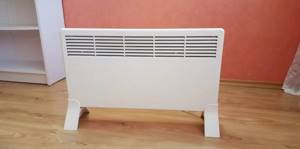
When choosing an inverter heater, pay special attention to the following nuances.
- Contacts. Their integrity and reliability should be checked. You must make sure of their quality, because this is a basic thing for any equipment. The unit must withstand high voltage in the network.
- Wires. Their quality directly affects the overall performance of this equipment.
- Quality marks. You should know that the models presented are of high quality and that the device will work for a long time.

If any parts break, it is better to contact a special service . Due to the complexity of the structure, problems may arise when repairing on your own. The service will be able to tell you the approximate cause of the breakdown so that it can be avoided in the future.
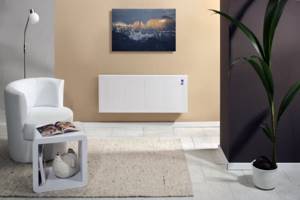
Safety systems can prevent flammable situations from occurring, but should not be relied upon. After all, this is a technique, and one that can heat up from the inside to high levels.
Use it carefully and make sure that no foreign objects or other things interfere with the immediate operation.

This type of equipment is very modern and technologically advanced. It combines high comfort, convenience, and mobility.
The current leaders in the market for these units produce high-quality products that perform their duties very effectively. For a home, cottage, garage and other premises it is difficult to find a more preferable option than this one. There are also various types of equipment that can be selected depending on specific needs and preferences.
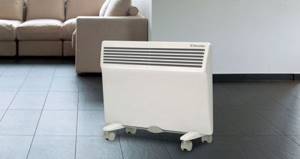
The features and functions presented by the manufacturers make operation simple, and use will bring warmth in the truest sense of the word . The only downside may be the cost, but due to so many advantages, such a thing cannot be cheap.
In addition to quality, these representatives of heating equipment are much more powerful and modern than their analogues.
Modern technologies prove that the quality bar is becoming higher. If older models of heating equipment had weaker characteristics, then current models are more advanced devices.

The company's designers, in turn, create beautiful and elegant designs so that the appearance of the products matches the high technology of the equipment. The price/quality ratio for such units is quite justified, and products from well-known brands with a good reputation can be safely purchased without any fear or risk.
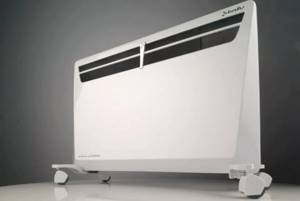
The following video provides a detailed overview of the economical inverter heater Ballu Evolution Transformer.
Types of convector heaters
Convection type heaters can be:
- Electrical.
- Mermen.
- Gas.
- Film.
- Convector-infrared.
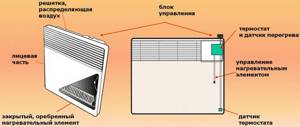
Convector device diagram
Electric heaters are inexpensive. They are very easy to install and use. However, heating with electricity is always more expensive than any other methods (gas, wood, coal, etc.), convectors are no exception. When purchasing a device, you need to be prepared for increased electricity costs.
Such devices are not very suitable for large areas, and over time the heating speed and power may decrease.
Only a device with automatic overheating protection can be considered fireproof. The thermostat will help you avoid unnecessary expenses.
Water convectors. It is clear that the coolant in a convector heater is water. The heater can be in-floor or similar to a regular radiator. The latter are attached to the wall and connected to the central heating. Such a device requires little electricity. The light weight of the device allows it to be mounted on a plasterboard wall.
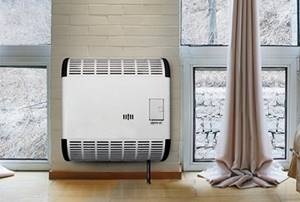
Gas. The availability of fuel makes this convector the most economical of all. It can be used not as an additional, but as the main method of heating.
The design can be floor or wall mounted. It can be connected to the main gas and to a cylinder. But there is enough hassle with a gas convector heater.
First, you need a chimney. Secondly, you need to connect and use such a device with extreme caution. And it costs much more than previous models.
Film convectors are a new product among heaters. This is a two-layer electrical insulating film with heating elements placed in it. They easily hang on the wall, do not spoil the appearance of the room, and after use they are simply rolled up and put away. Warranty – 3 years.
Convector-infrared heaters combine two technologies. But although the device is effective, its price is still unreasonably high.
Energy-saving home heaters will help you keep warm in winter without paying a lot of money for heating. Find out what causes energy saving and what types of economical heaters exist.
Read about how to assemble a long-burning stove with your own hands in the following article.
Do you want to save on buying a gas boiler? Then Russian-made boilers are your choice. Here https://microklimat.pro/otopitelnoe-oborudovanie/kotly/gazovye-rossijskogo-proizvodstva.html you will find out which models are worth purchasing and what are the advantages of our devices.
The “heart” of the convector is the heating element
The design features of the heating element (heating element) determine the performance of a convector heater:
- durability;
- efficiency;
- energy consumption level;
- price.
If the price of the device is low, a primitive heating element is installed inside - an open spiral. The mentioned convector models are produced by domestic and European manufacturers. Devices equipped with an open spiral have a low IP housing protection class and cannot be used for heating rooms with high humidity. The operating temperature of the open spiral is high (500 degrees), burning dust will cause an unpleasant odor, burn out oxygen, and become the source of a fire when large flammable bodies fall to the surface.
Electric convector heaters with closed-type heaters will be safer and more reliable in operation. Heating elements are formed by a steel tube in which an incandescent filament is placed. The operating temperature of a closed heating element is low - does not exceed +100 degrees. To make heat transfer more efficient, the steel tube is equipped with an aluminum radiator. Due to the high thermal conductivity of aluminum, the radiator quickly heats the circulating air.
Steel heating elements with an aluminum radiator have certain disadvantages. Since the coefficients of thermal expansion of materials are different, the tightness of contact between the radiator and the surface of the steel tube is broken over time. This results in a decrease in the efficiency of the device. The worst case scenario is local overheating of the heating element. This will lead to burnout of the heating element, creating a fire hazard.
The most modern (expensive) models of electric convectors are equipped with a monoblock heater. The heating element and radiator are a one-piece construction. Heating elements are reliable in operation - the product service life reaches 20 years. The heating filament of solid-cast heating elements is placed in a special backfill, which consists of tiny quartz crystals and some other substances. Aluminum alloys are used to make the body. For example, convector heaters (France) of the Noirot brand are equipped with a cast silumin heating element.
The most efficient heating with minimal energy consumption will be provided by combined models, for example, a convection-infrared heater. In addition to the heating element, an infrared panel is installed. Distinguish the unit from a typical convector by its appearance - the front panel of the convective infrared heater is perforated, the flow of infrared radiation unhindered illuminates the room.
pros
Units can have different sizes (depending on power) and shape. Equipping with various sensors and functions also differs between models.
But in general, convector heaters have the following positive qualities:
- Quiet operation. The device does not have a fan, so it does not hum.
- A wide range of placement options: there are floor-standing, hanging, narrow and long models for window sills...
- Attractive appearance. This allows you to fit the device into the interior and use them in offices.
- Good energy efficiency.
- Unlike other heaters, which can heat up over 150 0C, the convector body does not heat up above 90 0C (and some models - only 60 0C), which makes its use much safer.
- Portable models are equipped with wheels, wall-mounted models are easily attached to walls and do not clutter up the room. Such convector heaters can be used for summer cottages.
- They don't burn oxygen.
- Durability. Warranty up to 10 years. And the theoretical service life is even longer.
- Can work without human supervision.
- Easy to manage.
- It turns off when anything other than air gets inside.
- And all this for little money.
Which manufacturer and which type is better to choose: TOP-3
The cost of convector heaters is tens of times lower than split systems. In addition, they have no restrictions on operation due to outside air temperature. However, these units are inferior in functionality. The presented models almost do not differ in operational parameters; the Timberk model is more expensive in price.
When choosing a split system for heating a room, you can proceed from consumer qualities and the level of energy saving. According to reviews from experts and users, Mitsubishi, Toshiba and Samsung have the best characteristics.
Minuses
An electric convector type heater also has negative aspects:
- Makes a little noise while warming up.
- If the heating element burns out, you cannot replace it at home: you need to connect a tungsten filament and insulate the inside of the tube.
- The fact that the device does not have a fan ensures quiet operation, but the rate of heating of the room is slower than with forced circulation.
In warm and dry air, which is constantly moving, asthmatics and allergy sufferers do not feel very comfortable. Solution - purchase a convection heater with a built-in humidifier.
Varieties
Convectors have many varieties, which differ:
- by type of coolant (electric, gas, water);
- by type of operation (convection, infrared or mixed type);
- by installation method (floor, wall, ceiling, baseboard);
- by material of manufacture (steel, ceramic, glass, quartz);
- according to additional options (with natural convection or forced with a fan, with an ionizer or humidifier, with a dust filter and others).
When choosing a convector for your dacha or home, you should also remember about the different power of the devices. Preference should be given to one type or another based on the volume of heated air in the room. Manufacturers usually indicate the maximum number of square meters for which the device is designed.
Reviews
Most reviews about convector heaters are positive. They don't make noise, heat the air well and look good. Dissatisfaction is expressed by customers who have not calculated the power of the device. The heating seems insufficient.
Owners of models that do not have wheels and handles (for carrying the device while it is hot) say that these parts would be very useful.
Many are unanimous that at first the devices emit a not very pleasant smell.
So. Convector heaters are a worthwhile addition to weak heating systems. They are used on loggias and dachas. Models with a moisture-resistant body are good for bathrooms. Electric models remain the most popular because they are the easiest to use and the price of the device is relatively low.
A fireplace is considered a luxury item, not a necessity. The high price makes one refuse to buy it. But it is quite possible to make a stove yourself. Do-it-yourself fireplace: step-by-step assembly instructions, example of ordering and finishing.
Do I need to purchase a heat accumulator for a heating boiler? Here you will find the answer to this question.
Advantages and disadvantages of convectors
Before choosing and purchasing suitable convection heaters, you should familiarize yourself with their pros and cons.
Advantages:
- Compactness is a rather important quality for modern technology (gas convectors don’t count; they can hardly be called compact);
- Relatively fast heating - in some models it is accelerated due to forced convection;
- Environmentally friendly - convection heaters do not burn oxygen and have little effect on air humidity;
- Fire safety - to a greater extent this plus applies to water units, to a lesser extent to gas ones.
Flaws:
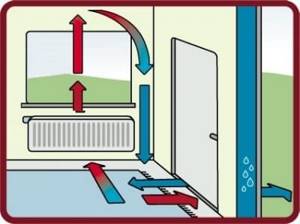
A convector can cause a draft in your home.
- Low efficiency in rooms with high ceilings - the maximum permissible ceiling height is 3 meters >;
- Convection heaters often create drafts - the most sensitive people feel them;
- A large temperature difference between the top and bottom of the room is what causes cold feet for some people.
Despite certain disadvantages, convection heaters remain popular heating equipment.
